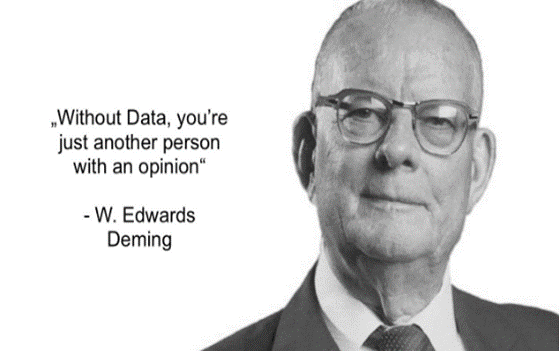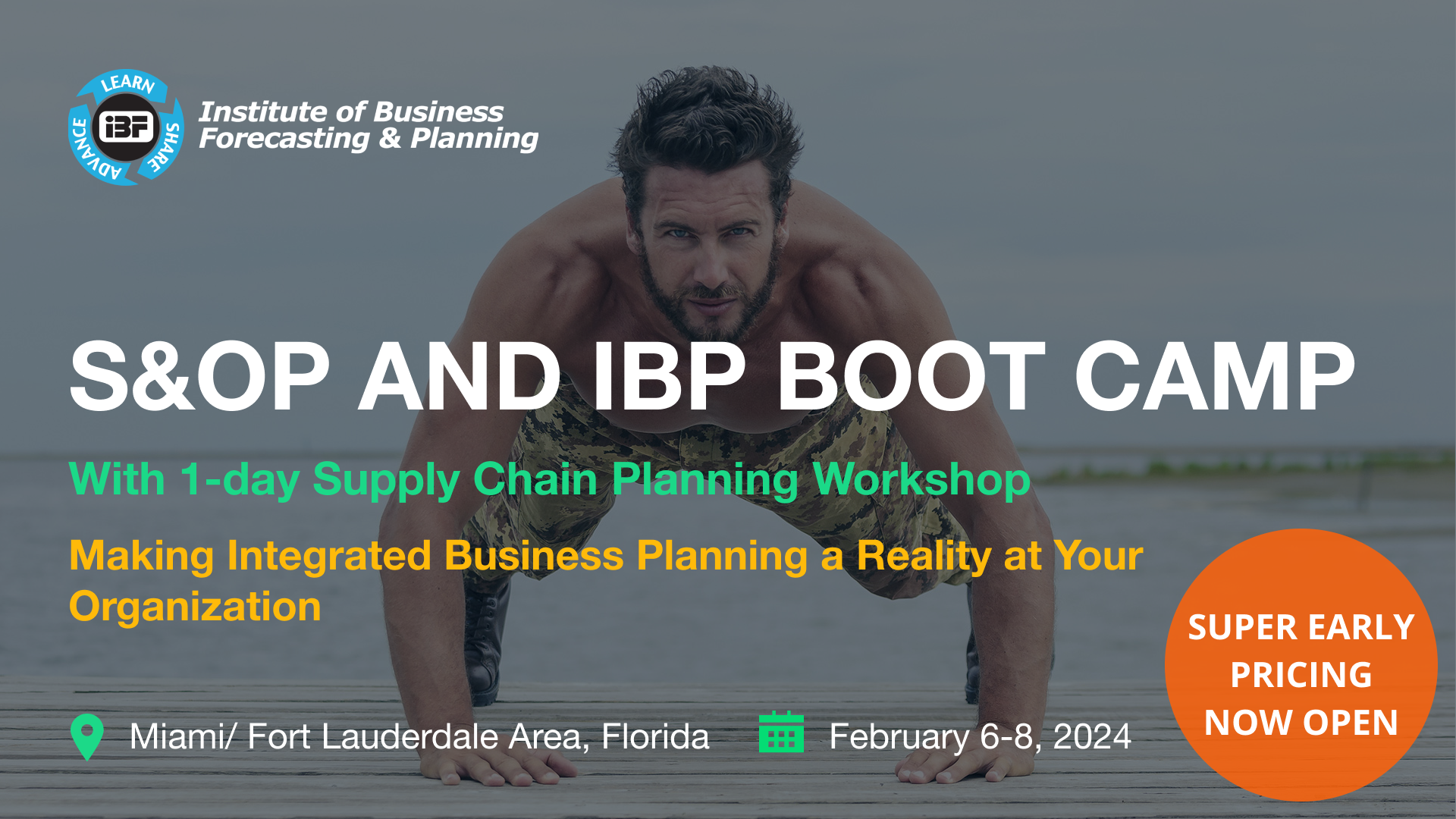Many companies strive to build, enhance, and protect their culture for a variety of reasons. Through corporate culture, companies provide an experience to their internal and external stakeholders that impacts the longevity of those multi-directional relationships. These relationships carry a premium value that directly impacts the bottom line.
In this article, I will describe why and how to build a data-driven culture that serves both internal and external stakeholders with a focus on the supply chain.
What is Culture?
One of the most comprehensive definitions I have encountered was provided by Dr. Norman Doidge in his book The Brain That Changes Itself, stating that “Culture is not just produced by the brain; it is also by definition a series of experience that shape the mind…we become “cultured” through training in activities such as customs, arts, ways of interacting with people and the use of technologies and the learning of beliefs and shared philosophies and religion.”

One’s identity is difficult to contain as we evolve, experience, and learn. This makes Dr. Doidge’s definition for the concept of culture appealing. We can all be on a self-correcting path by evaluating our experiences and their resulting takeaways. Although this broadly pertains to an individual’s own domain, the corporate world has a responsibility to improve the quality of the experience that their employees can ‘life’. These experiences might slowly but surely impact their weltanschauung [world view], and directly impact how employees evaluate and respond to what is around them. This is engrained in companies that have a well-defined culture.
“The starting point is identifying the mission statement – defining the purpose of the organization and how it serves its customers.”
As more and more companies mature in their culture, that responsibility grows to have an impact both internally and externally. The starting point of, course, is identifying the mission statement – defining the purpose of the organization and how it intends to serve its customers.
Internal Impact of Corporate Culture
Similar to how people become cultured in society as a whole, employees can build, embrace and enhance the corporate culture. The more serene and positive the culture, the higher the positive impact on the bottom-line. This is mainly driven by enhanced productivity through employees’ willingness to go the extra mile and adapt their efforts to support companies in dire times.
Additionally, higher employee retention rates have a direct correlation with minimizing additional costs. Based on stats shared by recruitment site www.indeed.com, hiring a new employee for most companies ranges between $4,000 and $20,000 – excluding salary and benefits.
Just some of the many external costs include advertising and marketing expenses, background checks and eligibility to work expenses, drug testing expenses, employee referral payments, and relocation costs. There are, however, additional costs that are harder to identify such as the time existing employees spend training the new hire and as a I see it, a “calibration” cost that is associated with transitioning a specific duty to a new employee while minimizing the risk of errors as part of the learning curve.
External Impact of Corporate Culture
When a positive culture is established, it is visible to the external stakeholders through employees’ interactions as well as the company’s overall reputation. The market positioning from the direct interaction between the clients and employees can be a competitive advantage that no one else can replicate.
The quality of service that the customer facing teams provide is a direct reflection of the quality of service the support teams behind the scene present as well. Culture is at the heart of all interactions.
While culture can positivity maximize the top line through repeat business from satisfied customers and converting new opportunities thanks to a positive reputation in the marketplace, it can also enhance the bottom line through cost reduction resulting from employee retention.
Key Characteristics of a Data-Driven Culture
There are few major characteristics of data driven cultures:
Objectivity
When internal teams are aligned on the importance of the data, it helps foster a safety zone in which to openly debate different points of view. This helps gain alignment without necessarily having to reach full consensus. This is where decision makers must look beyond their own interests while accepting that the best, data driven decisions win. Amongst many other things, objectivity means:
1.) Making decisions with the quality of the final product or service in mind beyond what is easy or convenient. The best opportunity I had to witness this approach was in the CDMO industry (Contract Drug Manufacturing Organization) and in the medical devices industry. The quality and availability of an end product that would help save a patient’s life – whether it was a drug or emergency medical device – would override any other consideration.
2.) Making decisions while accounting for both the current state of the P&L and the impact on future profitability. The best opportunity I had to witness this approach in action was in a global leading performance fabric company that is family owned. Critical decisions in that organization are never made without accounting for the potential long term impact on the future generations of the family.
Trust and Humility
Trust is a prerequisite to humility. The best way to build trust is through aligning on facts, and the best way to align on facts is through data. Where there is a healthy culture, employees across the hierarchy of the organization welcome constructive debate, have the humility to seek advice and feedback, and admit mistakes.
The major advantage that data driven cultures have lies in the ability to self-correct and apply lessons learned in transformation and agility journeys. This creates a unique competitive advantage. When major change-driving decisions are made and announced with transparency, and supported by data and facts, even the most difficult decisions such as reorganizations can be supported by employees across all levels. For that to happen, the foundation of a data-driven culture needs to be established so that such transparency can be accompanied with wisdom and compassion. It is worth noting that wisdom and compassion in a healthy culture is not limited to the top down, but also from the bottom up.
The Importance Of Data Integrity
The best way to appreciate something is to realize the impact of its absence or malfunction. Poor-quality data therefore can help a company embrace a data driven culture. When there is poor data within an organization, employees always welcome data integrity enhancements.
“The best way to appreciate something is to realize the impact of its absence or malfunction.”
Accounting for the fact that there is a hierarchy of planning based on horizon, investing in data integrity should be a strategic endeavor. The reasoning behind that is simple: the longer the decision horizon, the bigger the magnitude of the negative impact that using bad data has on an organization.
Once the negative impact of using bad data is comprehended, fixing the data becomes a strategic target that gets sponsored by the senior executive team.
How Processes Can Help Build a Data Driven Culture
Once data integrity is achieved, if it is not leveraged to its fullest extent, opportunities can be missed. The philosophical question posed by Dr. George Berkeley, an Anglican Bishop and philosopher in the 1600s, comes to mind: “If a tree falls in a forest and no one is around to hear it, does it make a sound?”
To ensure that organizations benefit from available data, robust processes should be implemented. S&OP/IBP is definitely a process that leverages data to its fullest extent, bridging the gap between execution and strategy with a direct impact on the bottom line. This is done in a a variety of ways. Some of the advantages consist of proactively providing visibility to constraints through the means of scenario planning and in ensuring cross-functional alignment on the integrated forecast.
“To ensure that organizations benefit from available data, robust processes should be implemented.”
An AMR Research study indicates that more than 50% of companies that implement S&OP experience increased sales revenue, along with other benefits that impact the P&L.
In addition to nurturing the data and giving it a home in the form of a process, to get the desired results across the different decision-making horizon the process itself needs to be well defined and established. The key components in ensuring the process progresses in its maturity journey include having the right champions, participants, and cadence.
Supply Chain/Operations is the Leader in Building a Data-Driven Culture
Amongst the main planning nodes that are part of a good S&OP/IBP process, Demand Planning & Forecasting represents the key node that helps shape the identity of this unique process. Although this function can fall under any part of the organization, it is well suited to being housed within supply chain. This doesn’t mean at all that S&OP/IBP is strictly a supply chain process. As the very name of Integrated Business Planning (IBP) indicates, it is a business process necessitating the integration of all the major business plans within the organization. However, the process is best suited to this segment of the business due to the lack of bias towards the demand signals that have a concrete impact on the rest of the organization.
A survey conducted by the Institute of Business Forecasting and Planning (IBF) indicated that 50% of the surveyed organizations house the Forecasting and Planning function under Supply Chain (Operations, Logistics, Procurement).
As such, to establish a data-driven culture from the ground up, once data integrity concerns are addressed, the right process needs to be established to derive the best results from the data.
“If we want objectivity, trust, and humility at the core of a data-driven culture, what environment should we provide employees to nurture it?”
One question we should all ask ourselves as leaders is that if we want objectivity, trust, and humility at the core of a data-driven culture, what environment should we provide employees to nurture it? This is where we must be clear on how to maintain positive human interaction in serving the people entrusted to our care.
 To get up to speed with the fundamentals of S&OP and IBP, join IBF for our 2- or 3-day Boot Camp in Miami, from Feb 6-8. You’ll receive training in best practices from leading experts, designed to make these processes a reality in your organization. Super Early Bird Pricing is open now. Details and registration.
To get up to speed with the fundamentals of S&OP and IBP, join IBF for our 2- or 3-day Boot Camp in Miami, from Feb 6-8. You’ll receive training in best practices from leading experts, designed to make these processes a reality in your organization. Super Early Bird Pricing is open now. Details and registration.

